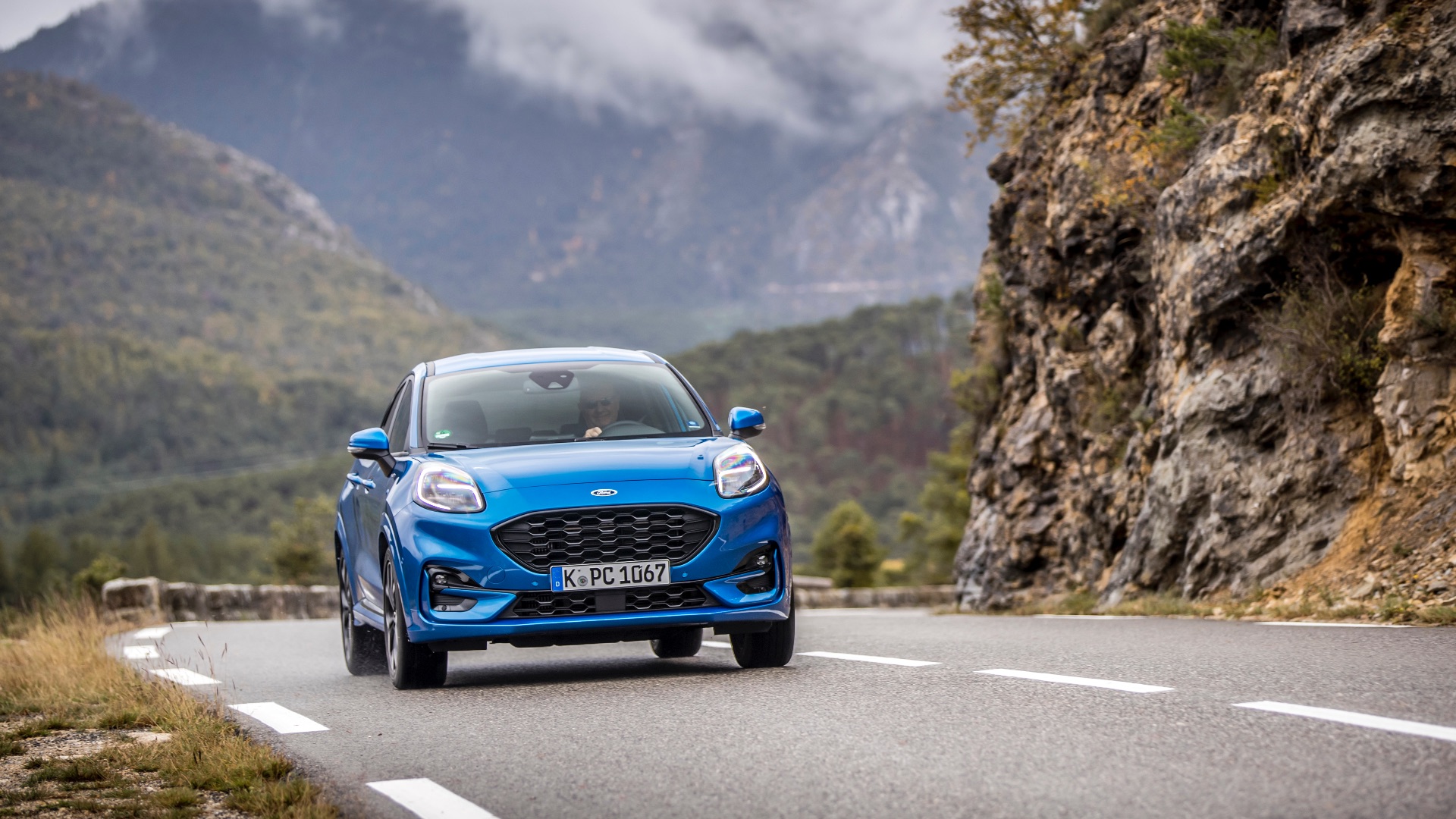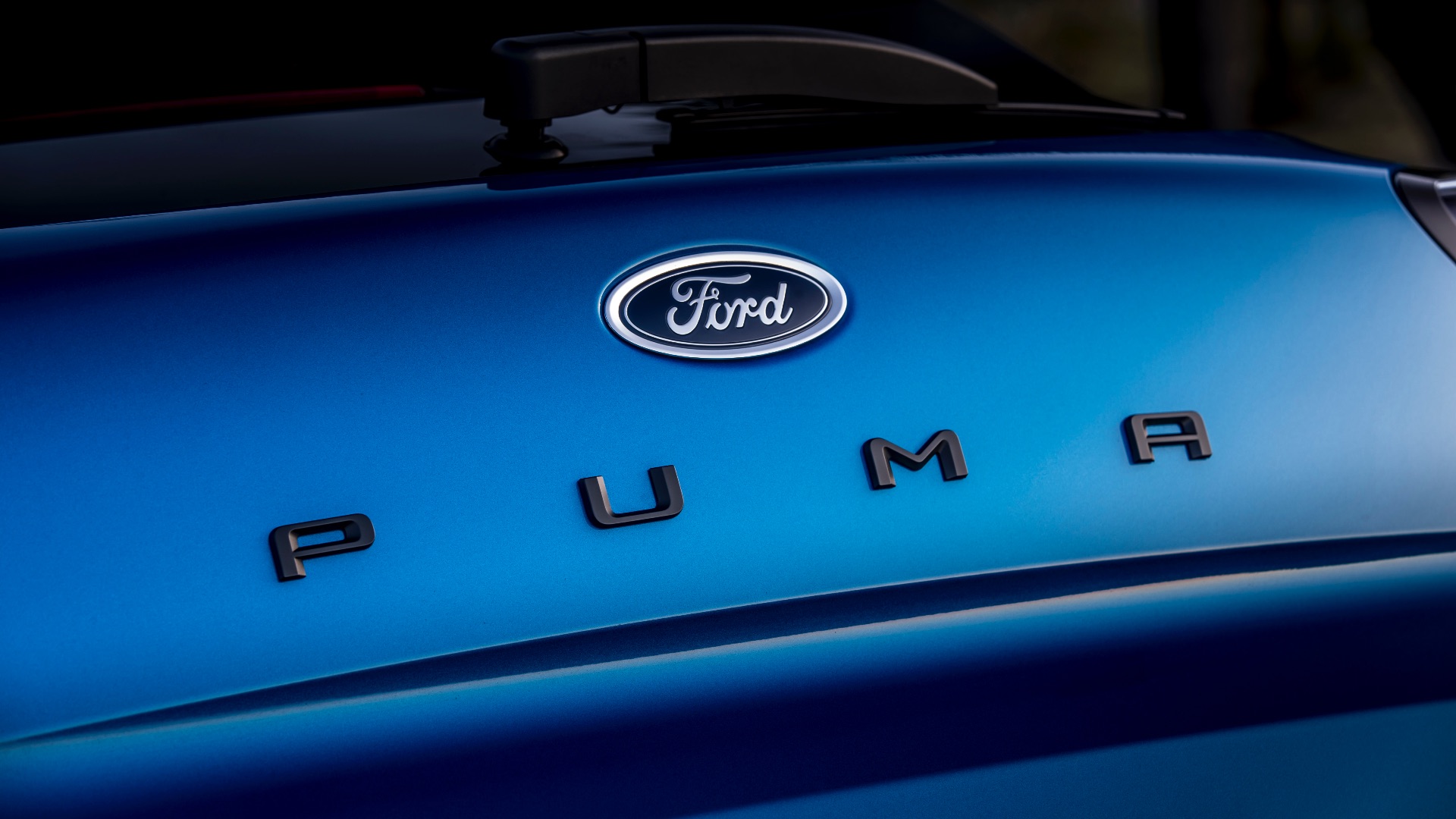
Take Britain’s best-seller, fortify it into something more fashionable, then add a sprinkling of off-road attitude. Catnip for car buyers, right? Not necessarily.
The 2014 Ecosport was Ford’s last attempt at a Fiesta-based small SUV. Designed primarily for India and South America, it felt woefully off the pace in Europe: a second-world car that became a first-world problem.
A critical drubbing led to slow sales, which even a comprehensive facelift in 2017 couldn’t fully fix.

Despite borrowing its name from Ford’s curvy late-90s coupe – also derived from the Fiesta, of course – the new Puma is effectively a successor to the Ecosport (although, bizarrely, the latter car lives on as a cheaper alternative). And this time, Ford isn’t doing things by halves.
The Puma, you see, is more than simply a taller Fiesta. Priced from £21,795, it has some genuinely clever features, plus lively handling and bountiful boot space. Spoiler alert: I think it’s the compact crossover to beat. Let’s start with the styling…
Different by design

Distinctive design can make or break a car in this sector. Looking different to a humdrum hatchback is what counts, even if that means being willfully weird. How else do you explain the success of the Nissan Juke?
Thankfully, the Puma is easier on the eye than the ugly Juke. Deep bumpers and fulsome haunches provide some visual muscle, while a steeply-raked windscreen adds a dose of dynamism. But its overall design is soft and friendly-faced (Ford points out the ‘optimistic’ front grille).
Two interesting features of the new Ford Puma.
1) The ‘Megabox’ – a large under-floor storage compartment, which has a plug so you can hose it clean.
2) The tailgate-mounted parcel shelf, which lies flush with the rear window when you open the boot. pic.twitter.com/vWNNKGBt1w
— Tim Pitt (@timpitt100) January 13, 2020
The luxury-focused Titanium model has black wheelarch extensions, while those of the sportier ST-Line are body colour. Both wear 17-inch alloys – or 18s for the flagship ST-Line X. You can upgrade to 19s, too, for the full pimp-my-Puma look.
There aren’t so many personalisation options as the Volkswagen T-Cross, for instance, but bold LED running lights and a bright palette of paint colours help the Puma stand out.
A family-sized Fiesta

Inside is where things get really interesting. You’ll recognise the Fiesta dashboard, but the digital dials are new. The 12.3-inch display changes appearance according to which drive mode you select. More on those shortly.
The high-mounted centre touchscreen is easy to use while driving, and is supplemented by voice controls and shortcut buttons on the steering wheel. My test cars both had the 10-speaker B&O Premium hi-fi, which is great value at £450.
The Puma’s seats are mounted 60mm higher than a Fiesta, which gives a more commanding view of the road. A 10cm longer wheelbase also liberates enough legroom for lanky teenagers in the back, although they may balk at the lack of USB points. Removable seat covers, which can be unzipped and washed, are also a neat touch.

The boot holds a class-leading 456 litres of luggage (401 litres in hybrid versions): more than the Kuga SUV from the class above. The load area is usefully square, too, at one metre wide and up to 1.15 metres tall. Open the – optionally electric – tailgate and the flexible parcel shelf lies flat against the rear window, so you don’t need to remove it when carrying bulky loads.
There’s also an 80-litre, rubber-lined storage compartment beneath the boot floor, which Ford calls the ‘Megabox’. A removable plug means you can rinse it out with water, which then drains away beneath the car. It’s the perfect place to stash muddy shoes or sports gear.
From mild to wild

The current engine line-up comprises Ford’s familiar 1.0-litre Ecoboost petrol in three guises: 125hp, 125hp with mild-hybrid (MHEV) tech and 155hp MHEV. This isn’t a hybrid in the usual sense; it can’t drive on electric power alone, nor can it be plugged in. That’s one-nil to the upcoming Toyota Yaris Cross hybrid already, then.
Instead, the batteries harvest braking energy to boost the engine when needed – and power the start-stop system.
The result is useful fuel savings. The 125hp MHEV manages 43.6mpg and CO2 emissions of 124g/km in the latest WLTP tests, versus 40.6mpg and 131g/km for the same engine without electrical assistance. The 155hp version costs £750 more upfront, but there’s little penalty at the pumps: it returns 42.0mpg and 127g/km.
Swapped into the entry-level 125hp Puma today.
Entry-level Titanium spec means black wheelarch extensions. They are body colour on the ST-Line – and flagship ST-Line X, which has larger 18in alloys (17s are standard). pic.twitter.com/vsT7b0OmYB
— Tim Pitt (@timpitt100) January 14, 2020
Frankly, neither engine is a ball of fire. The 125hp car reaches 62mph from rest in 9.8 seconds, while the more powerful model is 0.8 seconds swifter.
However, fast Ford fans don’t have long to wait for the Puma ST, which reaches showrooms in early 2021. Powered by a slightly torquier version of the 200hp 1.5-litre, three-cylinder engine from the Fiesta ST, it sprints to 62mph in 6.7 seconds. Order the Performance Pack (a very reasonable £950) and you get torque vectoring and a Quaife limited-slip differential.
Less excitingly, there’s also a 1.5-litre diesel and seven-speed automatic gearbox in the works. As well as other models, this combination will be offered in the forthcoming flagship ST-Line X Vignale, which combines racier styling with a plush, fully-loaded interior. The aim, according to one Ford spokesperson, is to “tempt buyers downsizing from larger diesel SUVs”.
Handle with flair

The Puma weighs just 60kg more than a Fiesta, so both engines feel adequately brisk. Indeed, I’d be tempted to stick with the 125hp MHEV. The extra oomph served up by its mild-hybrid system compensates for its small displacement, making for eager acceleration out of bends. The downside is a lot of thrummy three-cylinder noise under load.
Cleverly, the hybrid system cuts the engine as you coast to a stop, then restarts it in 300 milliseconds (literally the blink of an eye, says Ford) when you need to pull away. The process is utterly seamless, too.
There are five drive modes: Normal, Eco, Sport, Slippery and Trail, although with passive dampers their effect is mostly limited to steering and throttle response, along with stability and traction control calibration. Don’t get too carried away in Trail either: the front-wheel-drive Puma is no Land Rover.

In terms of chassis set-up, the Ford sits at the sportier end of the spectrum. Its ride is taut and measured – perhaps too firm on 19-inch wheels, so try before you buy – and it corners with calm composure. The steering is nicely weighted, although it doesn’t fizz with feedback like a Fiesta, and its manual gearshift is notchy and tactile.
Ultimately, the Puma isn’t as much fun as a Fiesta or Focus, but there’s a pleasing coherence to its controls, and responses on the road, which makes it the small crossover of choice for those who enjoy driving. Ford has a knack for getting this stuff right.
2020 Ford Puma: verdict

Usually when writing a crossover review, I conclude by suggesting you choose the hatchback instead. Conventional cars are generally cheaper to buy and run, drive better and are scarcely less spacious. In the case of cars like the outgoing Vauxhall Mokka X, not to mention the original UK Ecosport, fashion has a lot to answer for.
Today’s conclusion is less clear-cut, as the Puma offers some real advantages over its smaller sibling. It’s genuinely practical enough for a family of four, with the reassurance of a five-star Euro NCAP safety rating. It also offers technologies that aren’t available on the Fiesta, plus, it doesn’t sacrifice decent handling on the altar of raised ride height and a rugged look.

This is an extremely competitive class, with the Nissan Juke, Renault Captur, Seat Arona and Peugeot 2008 among an ever-expanding cadre of rivals.
The Puma’s sportier bent may not suit everyone, but it certainly should be on your radar if you like this type of car. This time, Ford has a hit on its hands.
ALSO READ:
The crazy Ford Fiesta concepts that never made production
Hot hatch hero: The Ford Focus RS story